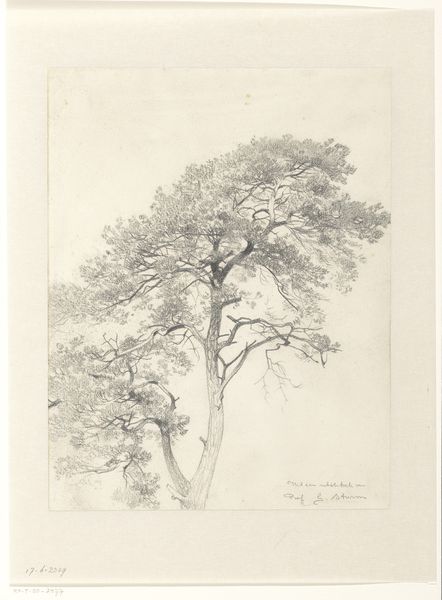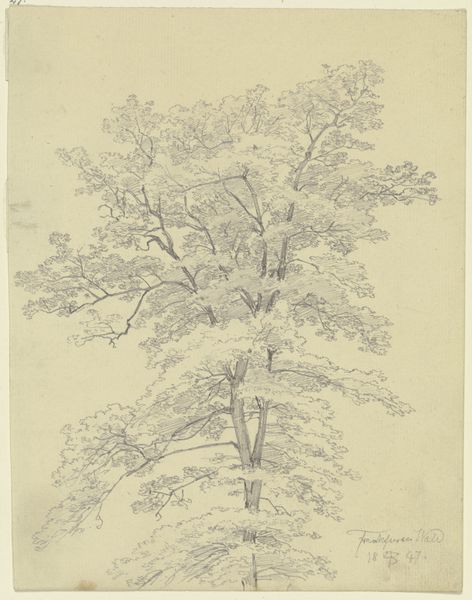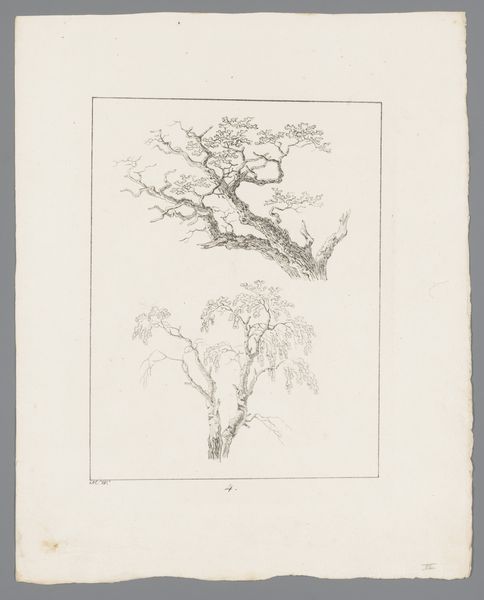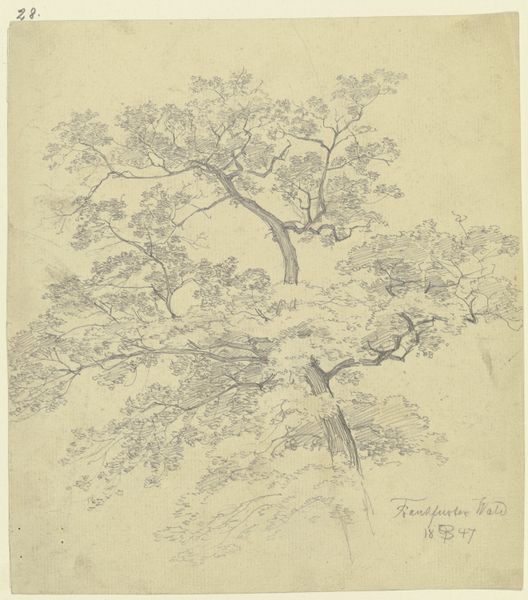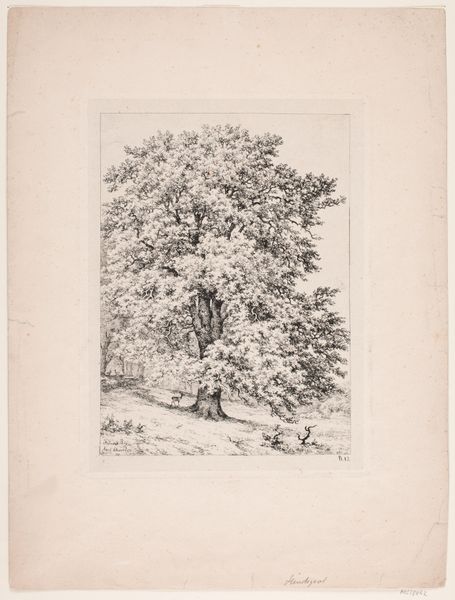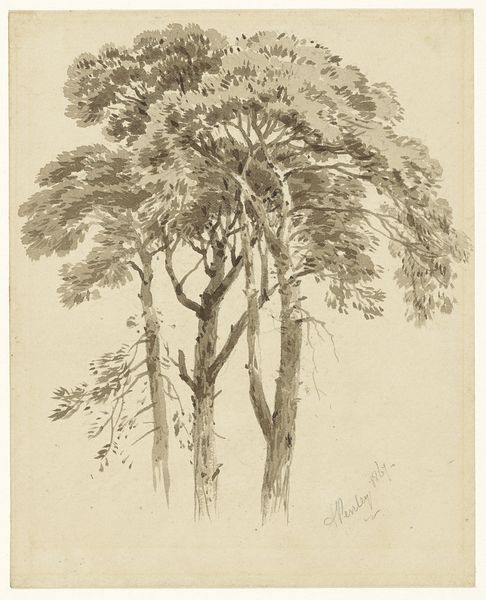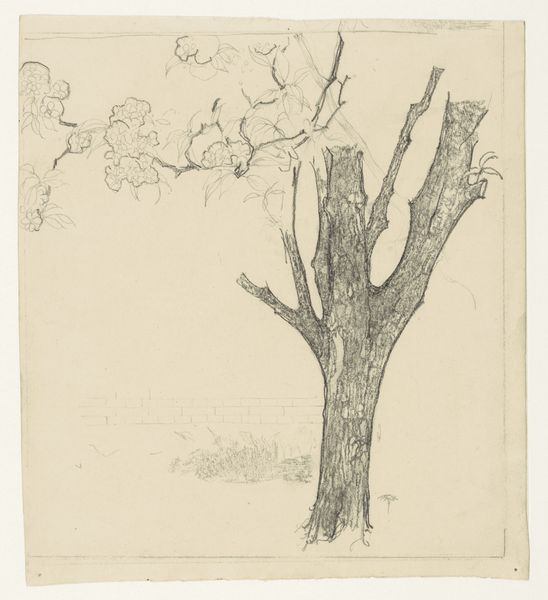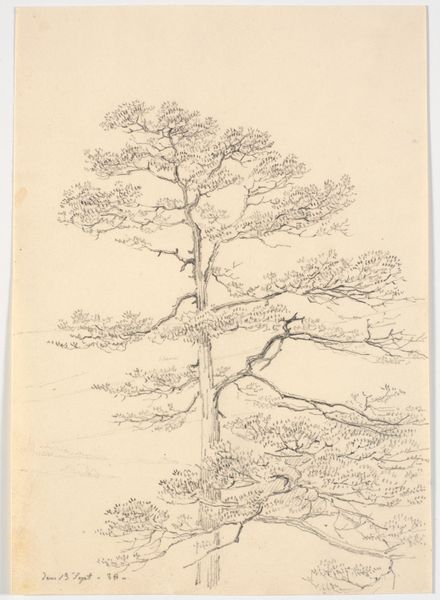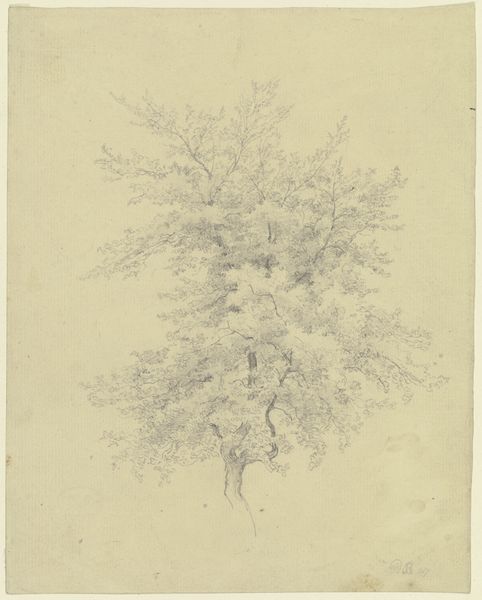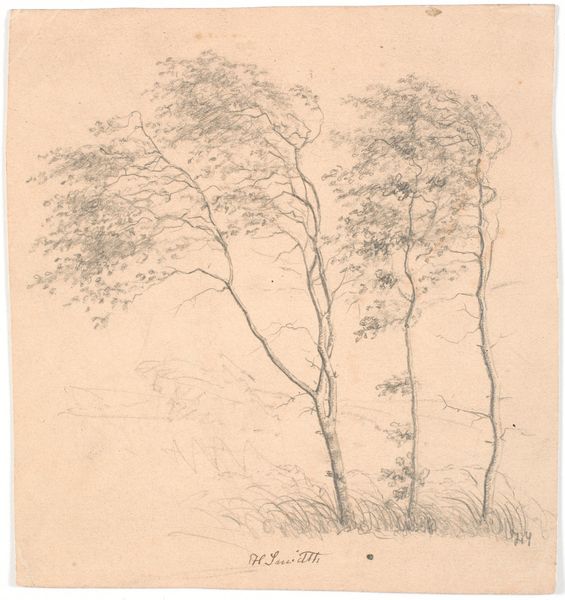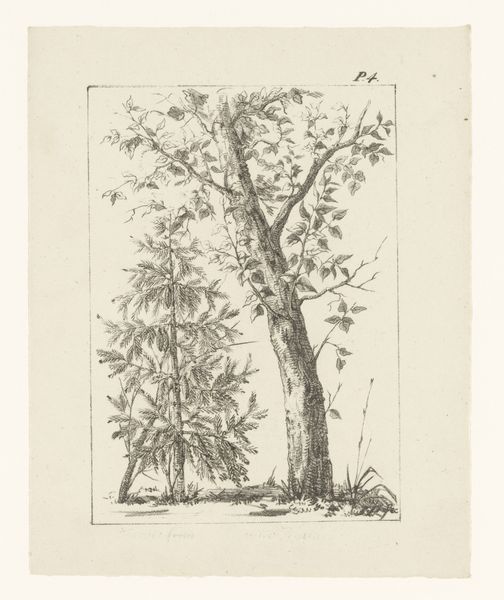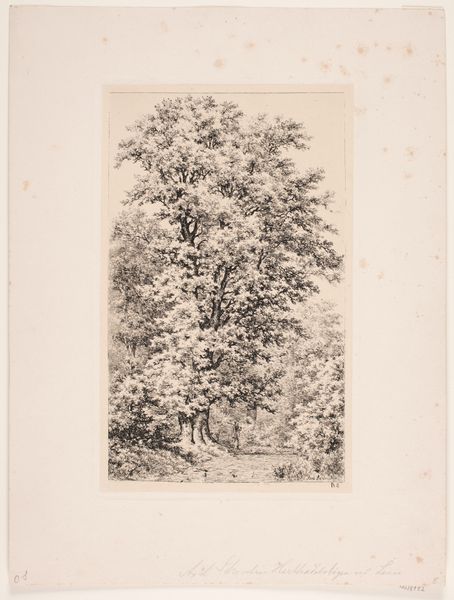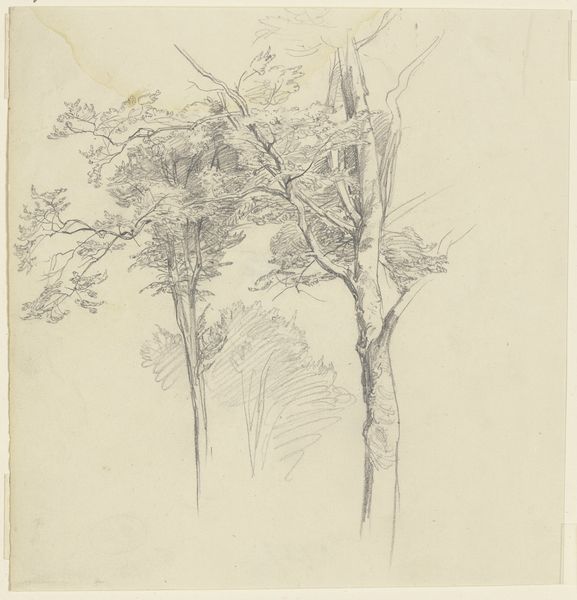
drawing, pencil
#
drawing
#
pencil sketch
#
landscape
#
geometric
#
pencil
#
naturalism
Dimensions: height 299 mm, width 231 mm
Copyright: Rijks Museum: Open Domain
Curator: The work before us, executed in pencil on paper, is titled "Boomstudie" which translates to "Tree Study". Georg Sturm likely created this between 1865 and 1923. Editor: There's a delicate stillness to it. A soft light seems to filter through the leaves, capturing a sense of serene contemplation. It's more than just a depiction of trees, isn't it? Curator: Indeed. Sturm, though lesser known, participates in the late-Romantic tradition of close observation of nature, common in art academies. It echoes the interest in representing detail with scientific precision of the era. Tree studies, in particular, served an important didactic role, a demonstration of proper composition but also fidelity to the forms found in nature. Editor: Trees frequently symbolize resilience, growth, and connection between earth and sky. Looking closely, I notice that one of the branches is broken, perhaps from storm or age, a potent image with diverse interpretations. Is Sturm exploring those universal themes? Curator: Possibly. I hesitate to over-interpret a study; however, we know nature played a huge part in forging German cultural identity. Landscape was often intertwined with patriotic feeling and spiritual depth. Even a seemingly straightforward drawing could carry layers of meaning related to those cultural contexts. Editor: There is something intrinsically human in our identification with trees. They stand tall and endure across ages like silent sentinels. And the contrast in the texture – the smooth trunk against the feathery foliage. Does that juxtaposition speak to a kind of binary opposition that Sturm might have been exploring, life and decay, strength and fragility? Curator: It's a convincing proposition. The study could then speak of human impermanence against nature's slower time scales, that were very fashionable themes in the German Romantic intellectual discourse. In any case, "Boomstudie" shows us not just trees but perhaps reflections on nation, memory, and nature itself. Editor: I appreciate that complexity, acknowledging art's intricate dialogue with its context. Seeing through these interwoven lenses expands how we understand this drawing today.
Comments
No comments
Be the first to comment and join the conversation on the ultimate creative platform.
